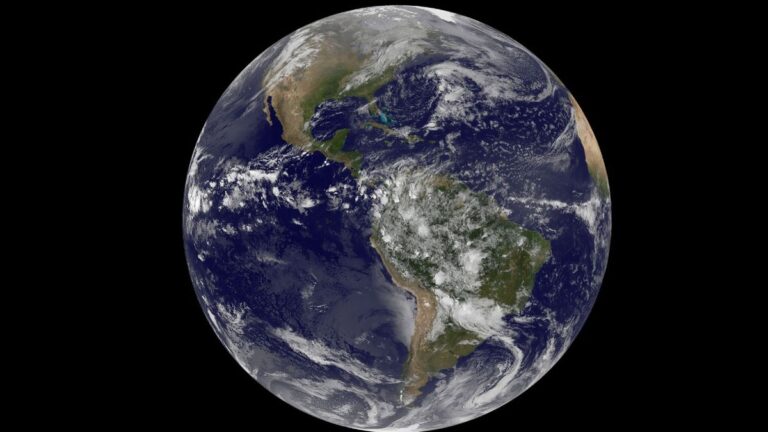The Moon’s shadow may be observed moving across the Earth from NASA’s Deep Space Climate Observatory thanks to its special location.
Only areas of the American southwest and west coast could watch the annular solar eclipse on October 14, but now you can see it from a different angle due to a new NASA image. A photograph of Earth captured by the Deep Space Climate Observatory has been made public by the space agency. As the event moves across the landscape, it depicts the Moon’s shadow passing over North America.
Despite the fact that the most recent eclipse was slightly different astronomically, all solar eclipses cast a shadow on Earth. As the Moon’s orbit is not a perfect circle, it is possible that when an eclipse happens, it will be somewhat closer or farther away. When the Moon is at or very close to its apogee—its furthest distance from Earth—an annular eclipse occurs. As a result, the satellite appears smaller in the sky and does not completely obscure the sun’s disc. The sun’s borders can be seen as a brilliant crimson ring during these eclipses, earning them the nickname “ring of fire.”
The Earth Polychromatic Imaging Camera, an imaging device, produced this magnificent picture. The Deep Space Climate Observatory (DSCOVR), one of three instruments on board, has a remarkable vantage position in space at a distance of roughly 1.5 million miles.
This 2015 SpaceX Falcon 9 rocket launch of this probe did not orbit the planet. It wouldn’t be able to see the entire surface from just a few hundred miles up, making it challenging to monitor both terrestrial and space weather. It revolves around what is known as the Earth-Sun L1 Lagrange point, a zone of gravitational balance. This places it in a position where it can detect solar storms before they reach Earth because it is between Earth and the sun. You may remember that the James Webb Space Telescope is also stationed at a Lagrange point, but it is at L2, which is on the side that is opposite from the sun.
The EPIC camera frequently takes full-disk photos of the planet. The photo up top was captured on October 14 at 11:58 AM central time, when the eclipse’s apex was over central Texas. The size of the shadow demonstrated how the sun was still partially hidden in a larger area of the continent. While the full eclipse could be seen for more than four minutes in the centre of the path, spectators along the outside could only see partial coverage for a few seconds.
The following annular solar eclipse won’t happen until June 21st, 2039. On April 8, 2024, a total eclipse will occur, though much sooner. From Texas to Maine, the US, the skies will be cloudy due to the occurrence.

